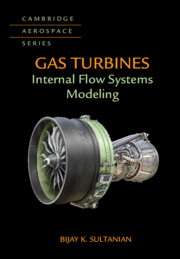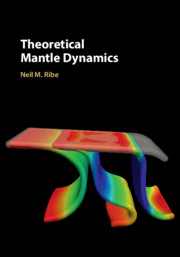Refine search
Actions for selected content:
8124 results in Fluid dynamics and solid mechanics
Abbreviations
-
- Book:
- Theoretical Mantle Dynamics
- Published online:
- 20 September 2018
- Print publication:
- 04 October 2018, pp xvi-xvi
-
- Chapter
- Export citation
7 - Long-Wave Theories, 1: Lubrication Theory and Related Techniques
-
- Book:
- Theoretical Mantle Dynamics
- Published online:
- 20 September 2018
- Print publication:
- 04 October 2018, pp 121-146
-
- Chapter
- Export citation
10 - Hydrodynamic Stability and Thermal Convection
-
- Book:
- Theoretical Mantle Dynamics
- Published online:
- 20 September 2018
- Print publication:
- 04 October 2018, pp 192-218
-
- Chapter
- Export citation
4 - Slow Viscous Flow
-
- Book:
- Theoretical Mantle Dynamics
- Published online:
- 20 September 2018
- Print publication:
- 04 October 2018, pp 33-85
-
- Chapter
- Export citation
6 - Boundary-Layer Theory
-
- Book:
- Theoretical Mantle Dynamics
- Published online:
- 20 September 2018
- Print publication:
- 04 October 2018, pp 96-120
-
- Chapter
- Export citation
2 - Dimensional and Scaling Analysis
-
- Book:
- Theoretical Mantle Dynamics
- Published online:
- 20 September 2018
- Print publication:
- 04 October 2018, pp 9-21
-
- Chapter
- Export citation
References
-
- Book:
- Theoretical Mantle Dynamics
- Published online:
- 20 September 2018
- Print publication:
- 04 October 2018, pp 292-309
-
- Chapter
- Export citation
9 - Theory of Two-Phase Flow
-
- Book:
- Theoretical Mantle Dynamics
- Published online:
- 20 September 2018
- Print publication:
- 04 October 2018, pp 175-191
-
- Chapter
- Export citation
8 - Long-Wave Theories, 2: Shells, Plates and Sheets
-
- Book:
- Theoretical Mantle Dynamics
- Published online:
- 20 September 2018
- Print publication:
- 04 October 2018, pp 147-174
-
- Chapter
- Export citation

Gas Turbines
- Internal Flow Systems Modeling
-
- Published online:
- 25 September 2018
- Print publication:
- 13 September 2018
THE CONTROLLER DESIGN FOR SINGULAR FRACTIONAL-ORDER SYSTEMS WITH FRACTIONAL ORDER 0 <α< 1
- Part of
-
- Journal:
- The ANZIAM Journal / Volume 60 / Issue 2 / October 2018
- Published online by Cambridge University Press:
- 25 September 2018, pp. 230-248
-
- Article
-
- You have access
- Export citation

Theoretical Mantle Dynamics
-
- Published online:
- 20 September 2018
- Print publication:
- 04 October 2018
Appendix F - Solution of an Overdetermined System of Linear Algebraic Equations
-
- Book:
- Gas Turbines
- Published online:
- 25 September 2018
- Print publication:
- 13 September 2018, pp 340-346
-
- Chapter
- Export citation
frontmatter
-
- Book:
- Microhydrodynamics, Brownian Motion, and Complex Fluids
- Published online:
- 27 August 2018
- Print publication:
- 13 September 2018, pp i-iv
-
- Chapter
- Export citation
5 - First Effects of Inertia
-
- Book:
- Microhydrodynamics, Brownian Motion, and Complex Fluids
- Published online:
- 27 August 2018
- Print publication:
- 13 September 2018, pp 104-113
-
- Chapter
- Export citation
9 - Rheology and Viscoelastic Flow Phenomena
-
- Book:
- Microhydrodynamics, Brownian Motion, and Complex Fluids
- Published online:
- 27 August 2018
- Print publication:
- 13 September 2018, pp 201-236
-
- Chapter
- Export citation
7 - Stochastic Differential Equations
-
- Book:
- Microhydrodynamics, Brownian Motion, and Complex Fluids
- Published online:
- 27 August 2018
- Print publication:
- 13 September 2018, pp 139-169
-
- Chapter
- Export citation
Appendix C - Transient Heat Transfer in a Rotor Disk
-
- Book:
- Gas Turbines
- Published online:
- 25 September 2018
- Print publication:
- 13 September 2018, pp 323-333
-
- Chapter
- Export citation
6 - Thermal Fluctuations and Brownian Motion
-
- Book:
- Microhydrodynamics, Brownian Motion, and Complex Fluids
- Published online:
- 27 August 2018
- Print publication:
- 13 September 2018, pp 114-138
-
- Chapter
- Export citation
Copyright page
-
- Book:
- Gas Turbines
- Published online:
- 25 September 2018
- Print publication:
- 13 September 2018, pp iv-iv
-
- Chapter
- Export citation


